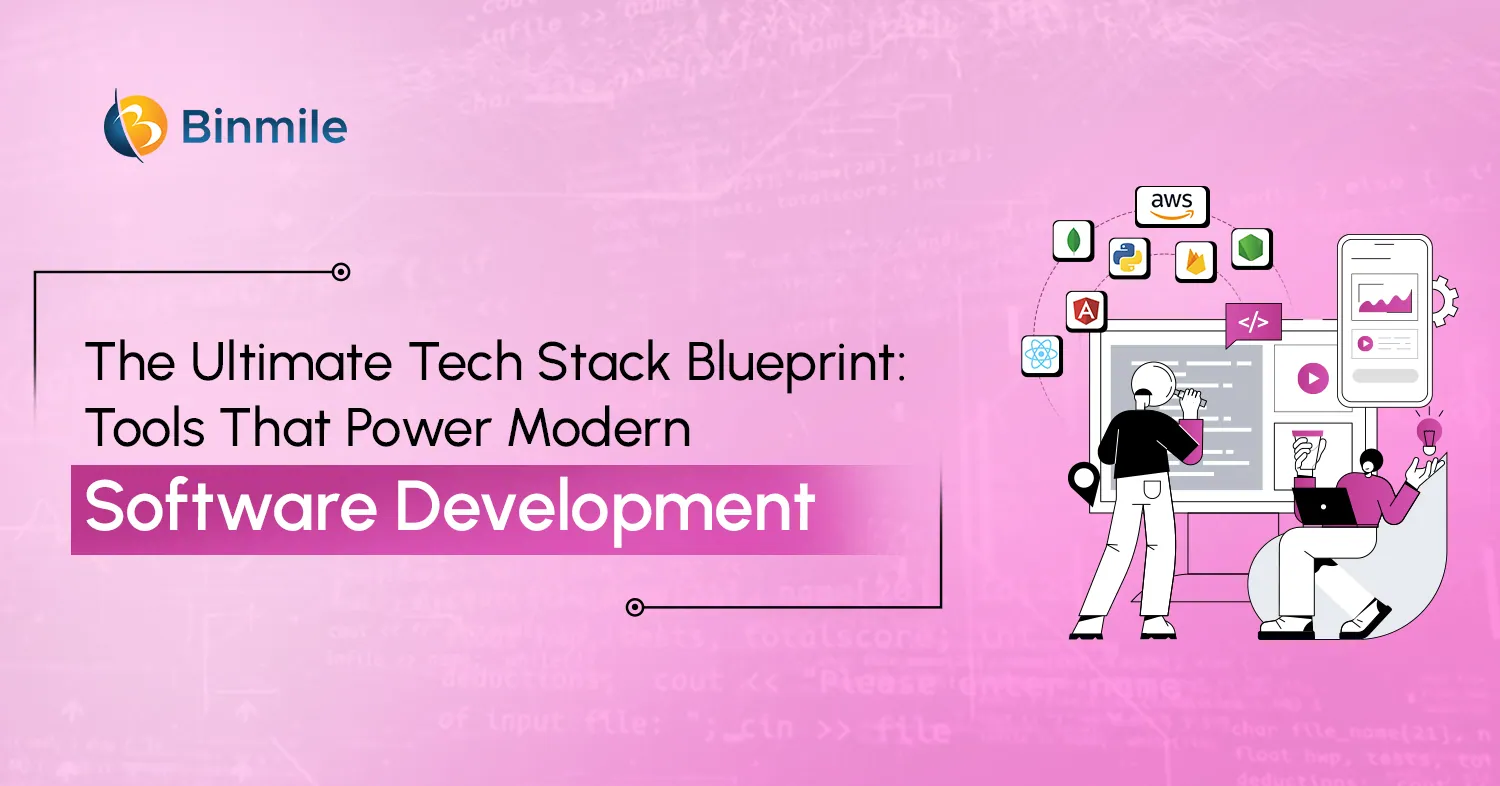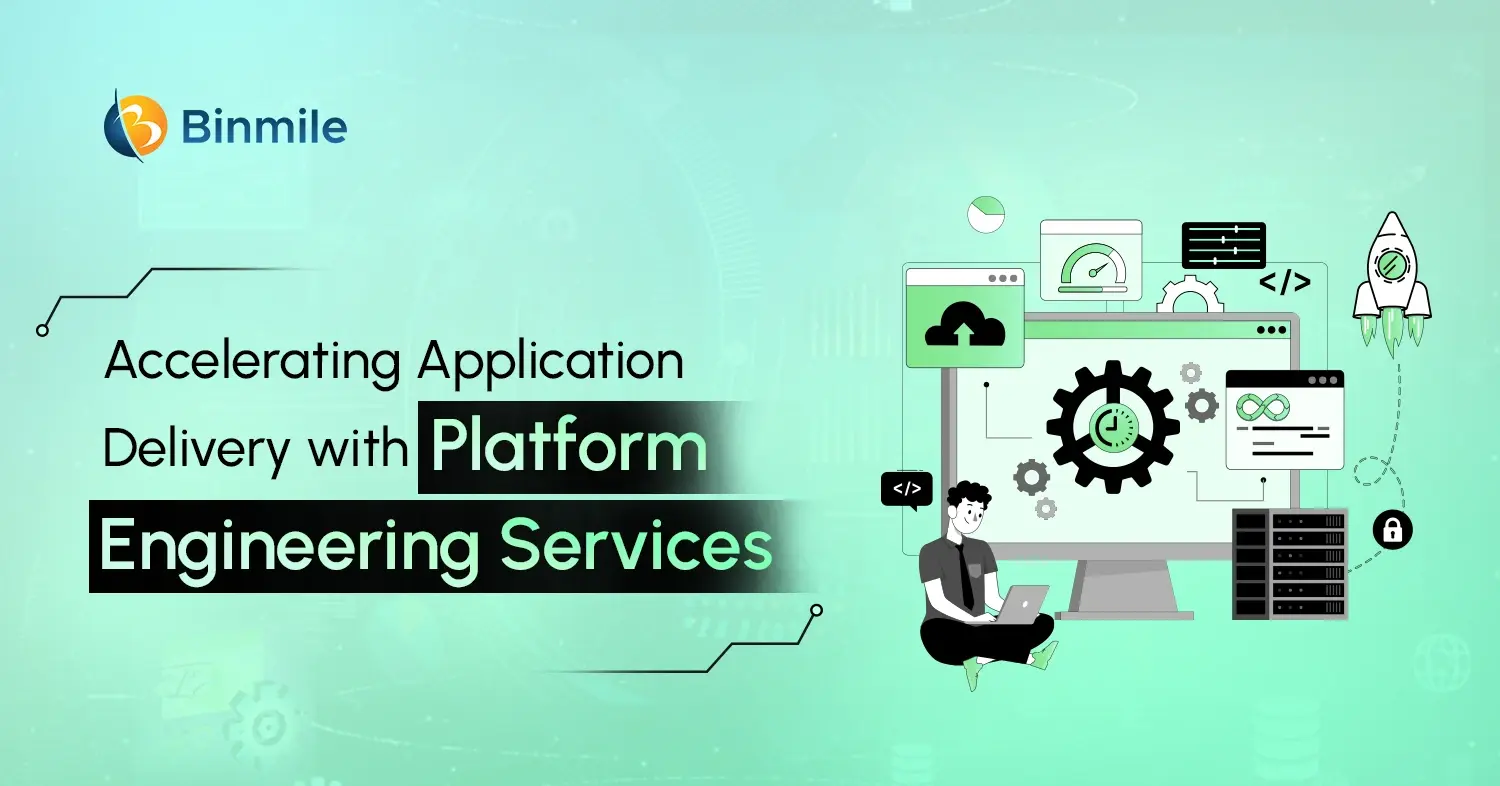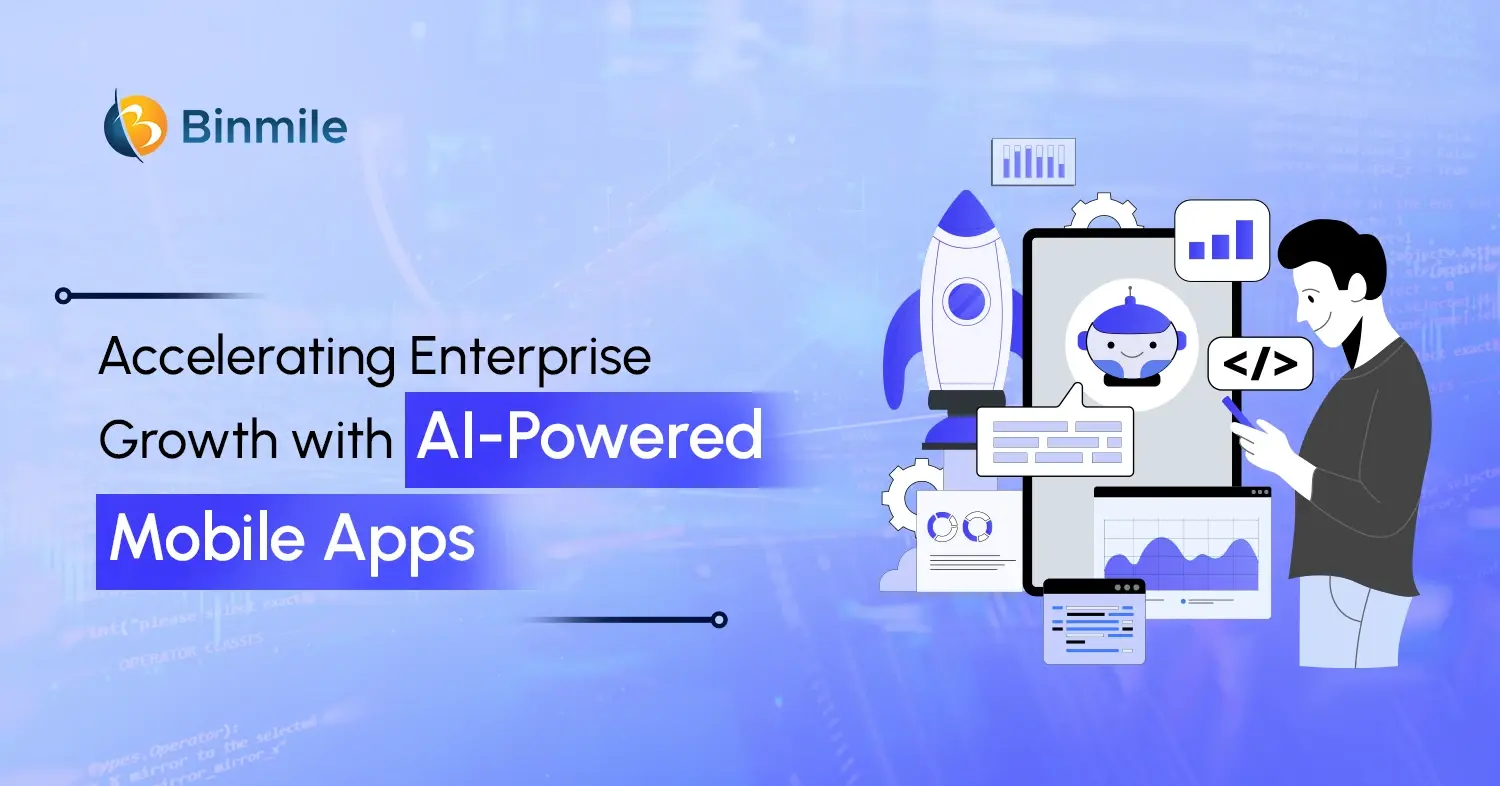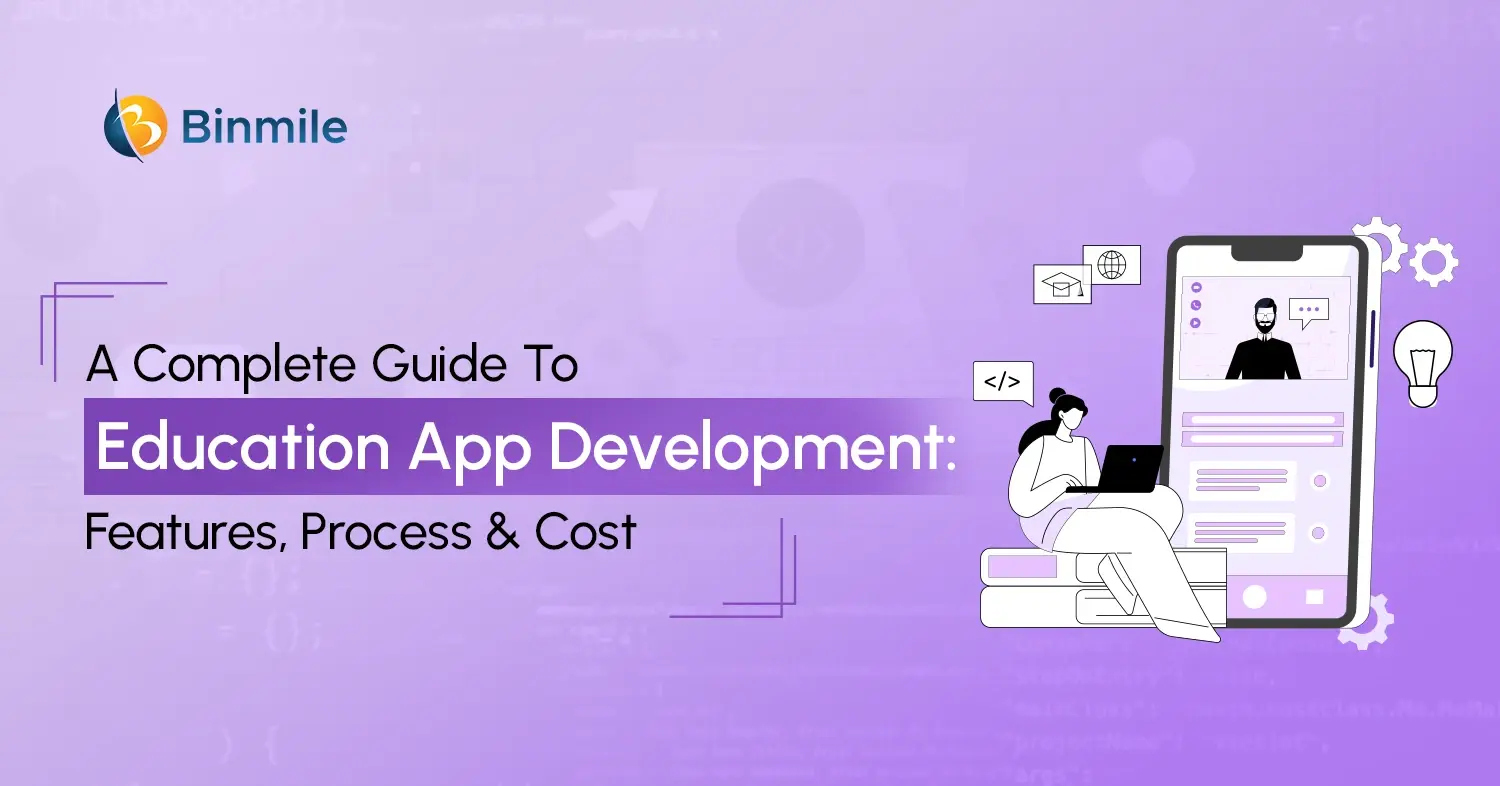- components of software tech stack
- how to choose software tech stack
- JAM stack
- LAMP stack
- MEAN stack
- MERN stack
- MERN vs MEAN stack
- most popular tech stacks
- necessity of tech stack
- popular software tech stack
- popular tech stacks for software development
- serverless stack
- Tips to Choose the Right Tech Stack
- top backend technologies
- top databases technologies
- top frontend technologies
- top software technology stack
- What is a Tech Stack?
Tech stack or technology stack is a bundle of software components, tools, frameworks, libraries, databases, or infrastructures that together help developers create a functional software application or website. A software technology stack can break or make the software project; that’s why choosing the right stack for a specific software development is very important. The perfect development stack comes with reliability, scalability, and overall success of an application.
Picking the most suitable software stack for the development project is like selecting the right tools for a job. Therefore, it is better to pick the most suitable stack for the project to succeed in the long run. So, what are these technology stacks? And how do they guarantee growth and success for an organization? In this blog, we have covered 5 excellent coding stacks and 7 tips to help businesses choose the best stack for their custom software solutions.
What is a Tech Stack?
A tech stack, commonly known as a development or technology stack, is a combination of software tools, frameworks, libraries, and programming languages. Using a stack, teams develop web apps or mobile apps, as it is the underlying infrastructure that is necessary for an application to be built. This ensures that reliable and scalable applications are built with a much faster time-to-market delivery speed.
It consists of multiple layers or components, each serving a different purpose in the software development process. These layers work together to provide for creating and operating software applications efficiently. The stack mainly consists of three components or layers: the frontend, the backend, and the database. Businesses can ensure smoother development processes by having these layers that adapt perfectly to the evolving needs of business goals.
Key Components of a Software Tech Stack
According to the experts of top software development companies, a tech stack is made up of three main components that are:
- Client-side (Frontend): The frontend, or the client-side component, is the face of the website or the application. Frontend enables users to see and interact with a User Interface. The frontend focuses on and ensures that users have an engaging visit to an app. The main interface is built using technologies such as HTML, CSS, JavaScript, and frameworks. This layer helps in the creation of responsive yet interactive UIs, giving a seamless user experience.
- Server-side (Backend): The brain of the application, or the backend, handles all the logic, communication, and processes to perform essential functions. The main responsibility of the backend layer is to handle requests from the frontend UI, process the logic, and then create dynamic changes in real time. This component makes sure that the application runs smoothly and creates functional changes when performing actions such as clicking a button or submitting a form.
- Database: The database, or the memory bank of an application, is a structured collection that stores data in an efficient and secure way. Data types or fields can include user profiles, transactions, product information, and many more useful fields, depending on the database structure and need. Also, it manages the application’s data and ensures that teams can have faster access to organized datasets, eliminating any delays and improving application performance.
Best Software Technology Stacks for Custom Development Solutions
1. MERN Stack
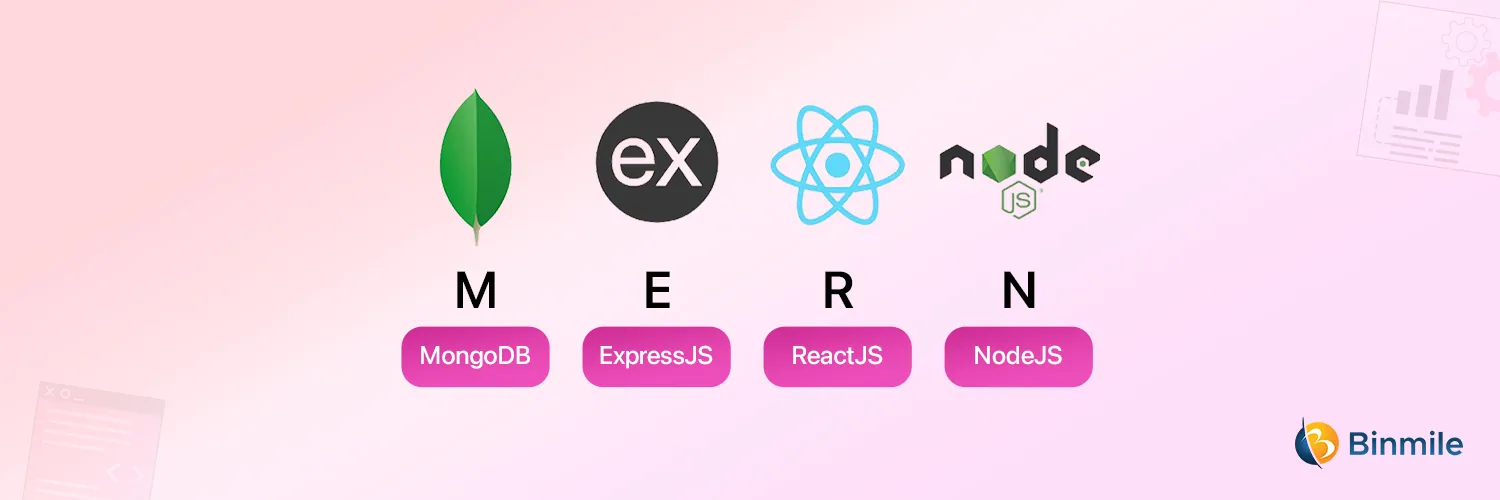
MERN is a complete, pre-built software stack based on JavaScript technologies. The acronym stands for MongoDB, Express, React, and Node. These languages together make it a useful stack for custom software development purposes. The architecture of the MERN stack is constructed as a three-tier architecture, which has React.js for web UI, Express.js for backend purposes, Node.js for runtime environment, and MongoDB for managing and storing data.
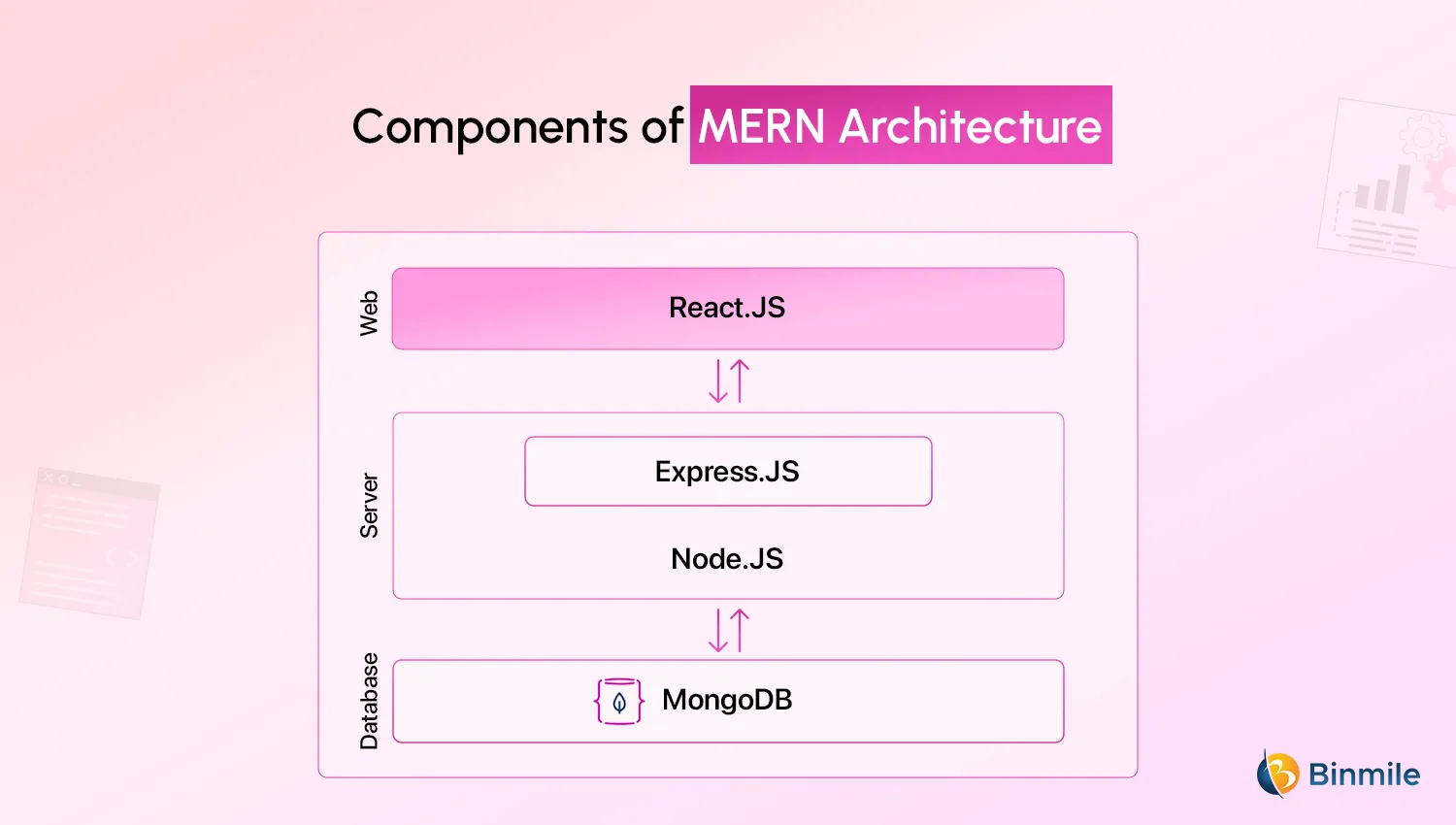
- MongoDB: It is a document database, or non-relational database, which means it’s a NoSQL database. This means that it doesn’t store data in fixed rows and columns, instead providing a flexible and scalable schema that is composed of field-value pairs. This document structure is very convenient, and teams can use and retrieve the data with much ease. When compared MongoDB with MySQL, MongoDB has a schemaless structure and easily handles complex data volumes.
- Express.js and Node.js: Express, or Express.js, is a server-side framework that is hosted within the Node.js runtime environment. These two are written using JavaScript and are essential for the JavaScript ecosystem. Express is a set of features or tools that utilizes Node for simplifying tasks like the backend routing process, handling requests and responding to them, managing middleware, or any APIs.
- React.js: It is a JavaScript library that is used to create dynamic and fast user interfaces with the help of React components. These components are simple and reusable building blocks of any application, which manage the internal state and logic. It uses a virtual DOM (Document Object Model) that helps access the data and update it according to the requirements, which leads to improved development performance.
2. MEAN Stack
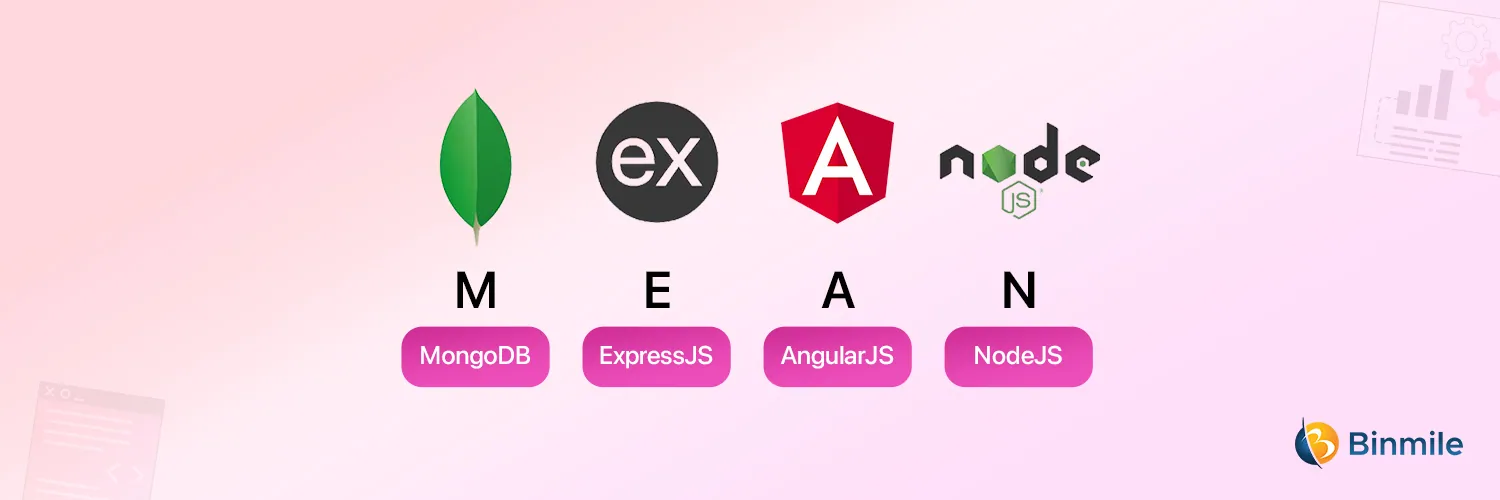
MEAN is another popular technology stack, similar to the MERN stack, but uses Angular instead of React. It comprises MongoDB, Express, Angular, and Node.js. It is an end-to-end JavaScript-based stack that allows teams to use it for developing cloud-native applications, as it offers scalability to manage and store concurrent users on its own web server. The MEAN stack follows a modular architecture, which is the same as MERN but replaces React with Angular.
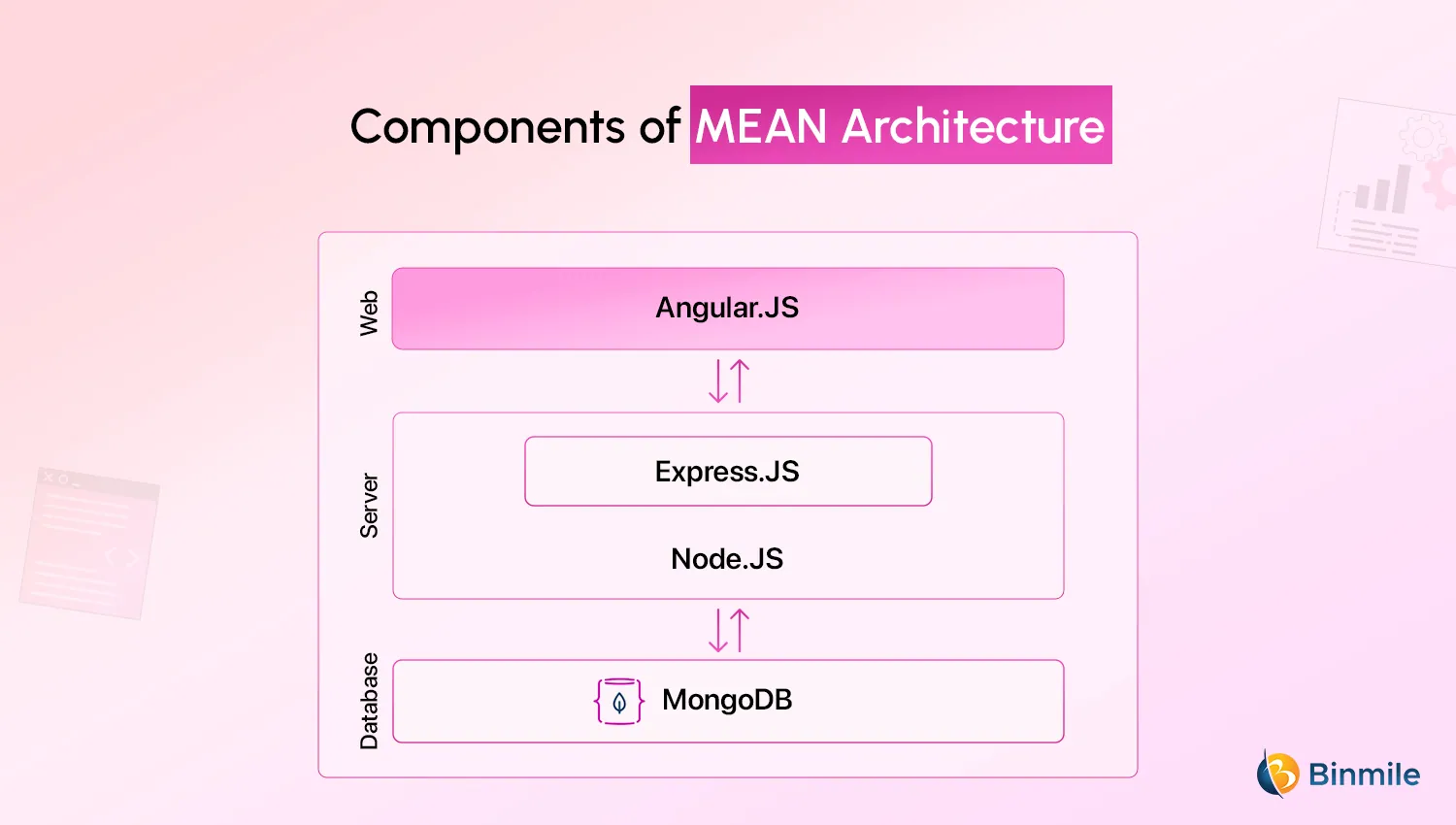
Since MongoDB, Express, and Node.js work the same way in both MERN and MEAN, let’s learn about Angular.js and what the difference is between MERN vs. MEAN.
- Angular: It is developed by Google and is a structured framework for building user interfaces with built-in solutions for various functionalities such as routing, HTTP requests, dependency injection (DI), state management, form handling, etc. Out of these, the core built-in functionalities that truly prove Angular is better than React are Angular router and reactive forms for form handling.
The router module is used for handling complex navigation and provides powerful nested routing or dynamic route matching strategies. Whereas, reactive forms allow teams to handle every single custom logic, whether it is simple or complex form inputs, that too without any third-party dependencies.
3. LAMP Stack
LAMP Stack is an acronym for Linux (operating system), Apache (web server), MySQL (database), and PHP/Perl/Python (programming language). It has all the free and open-source software development languages, which are maintained by a large community of developers. It is an ideal choice for developing custom web apps, as it offers scalability when handling traffic workloads and also accommodates changing requirements easily.
LAMP is a widely used development stack and has an architecture of a classic layered approach as follows:
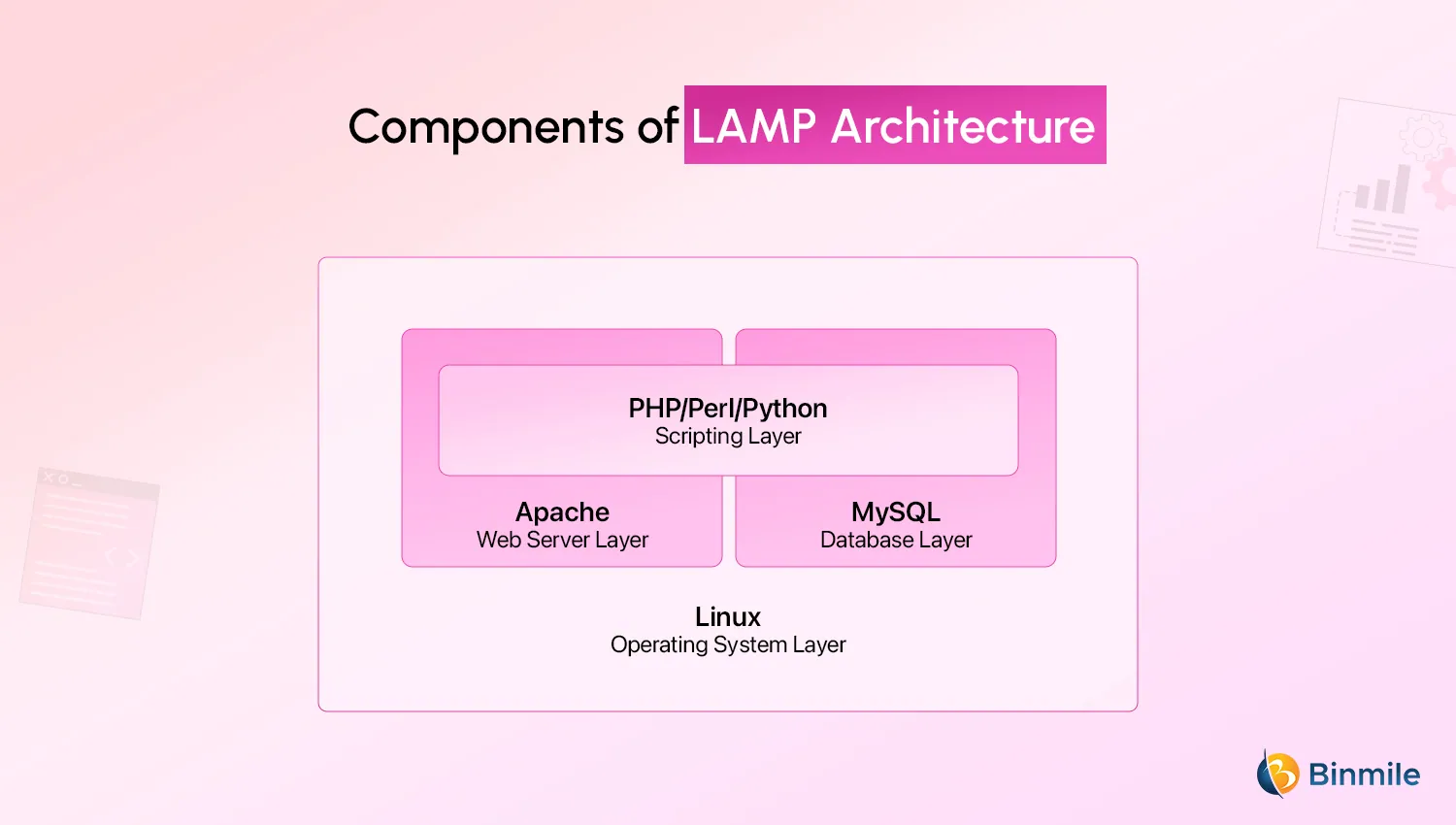
- Linux: It is an operating system that is popular for its flexible configuration options. This means that using Linux, teams can configure system services or permissions with much more precision and control. Also, it provides strong automation tools that help in scripting and understanding the behavior through shells like Bash. These automation tools in scripting help developers to automate tasks and manage deployments with much more system control.
- Apache: It is a web server that is feature-rich in nature and runs at least 52M+ live sites on the internet. Its main role is to handle requests from the client side and serve the web assets via HTTP to the client. It is maintained by an open-source community and offers various features such as SSL/TLS encryption for security purposes, virtual hosting, modular design functionalities, and cross-platform compatibility.
- MySQL: MySQL is a relational database or structured database management system that is used for its reliable and secure features that handle data efficiently. It is most suitable for managing complex data assets and storing them in rows and columns in a table. It has SQL (Structured Query Language) that supports some defined queries for data retrieval and data manipulation operations. Some of these core operations include SHOW, DROP, SELECT, INSERT, UPDATE, DELETE, FROM, etc.
- PHP/Perl/Python: These languages are server-side scripting languages that work for creating dynamic web pages along with the Apache web server. Out of these options, PHP is the most commonly used in the LAMP stack. This is because it is an easy-to-use and beginner-friendly programming language. Apart from these, it has a large ecosystem of tools and reusable libraries that make it a good choice for building apps.
4. JAM Stack
JAMstack stands for JavaScript, APIs, and Markup, which focuses on static files generated at runtime in developing a website or an application. It eliminates the need for having a server-side backend, and teams can build the app using HTML, CSS, and JS only. Instead of a traditional server setup, it does automated deployments, and the content is prebuilt and optimized during the build setup process.
It has an architectural approach for the web that dictates the web experience without the need for data and business logic.
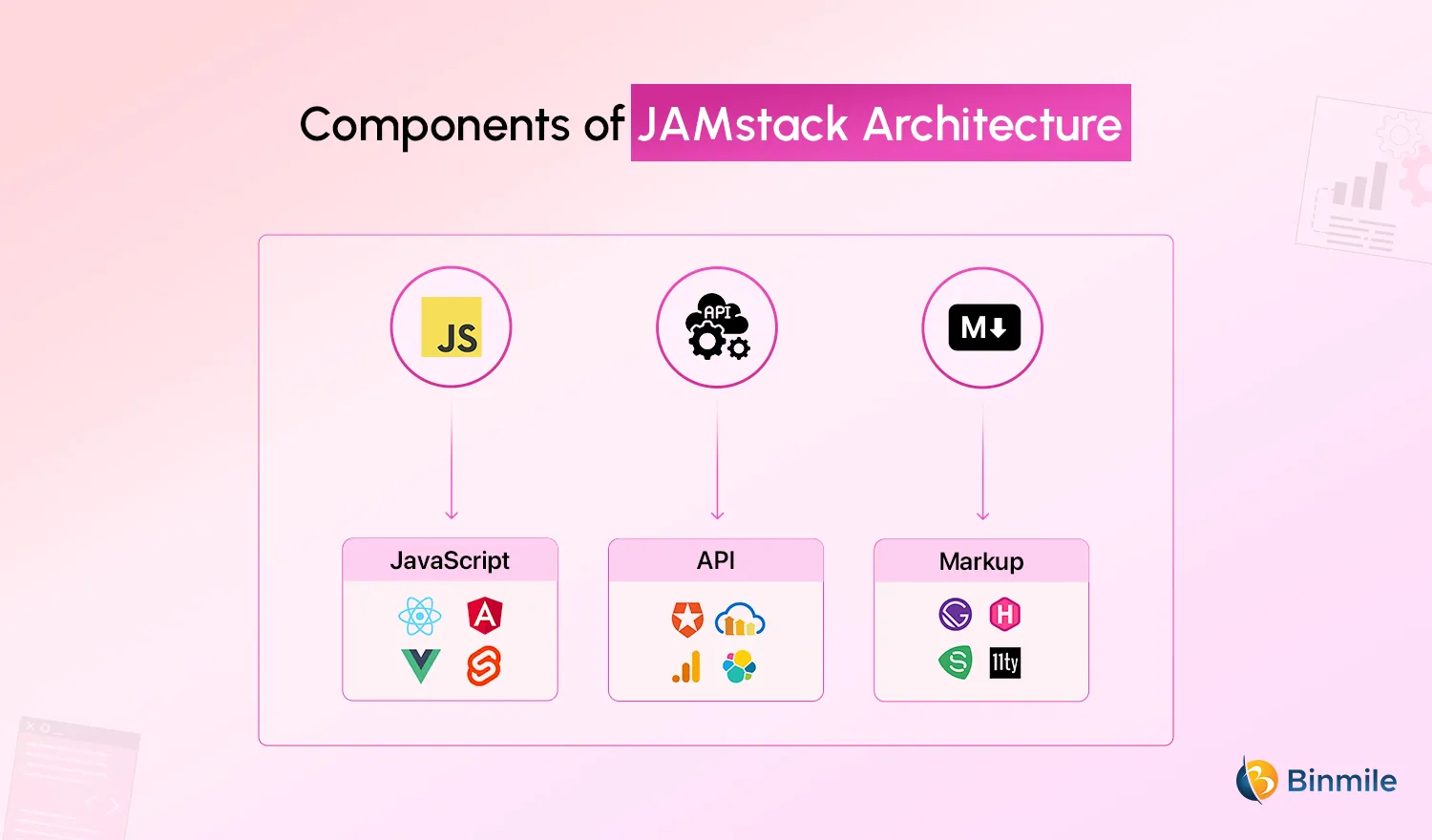
- JavaScript: It is used for accessing any frontend framework such as React, Svelte, Vue, or Next, according to the requirements and the team’s choice. The main key in JAMstack is that it doesn’t matter which language developers choose, but it should be completely disconnected from the back end. JavaScript ensures the management of dynamic functionalities like user authentication, real-time regular updates, and more.
- APIs: They are used for accessing third-party service providers, SaaS, webhooks, and other backend services. This allows for common functions like messaging service, emailing, payments, authentication, etc., with the help of APIs. Teams do not rely solely on the server for building web apps. This ensures flexibility, and teams can choose whichever services suit them the most.
- Markup: It is the last element of the JAMstack and serves as static HTML files directly to the browser. The main role of Markup language is to provide HTML files at run time for generating fully rendered HTML pages. This is done without relying on server-side rendering or on runtime generation, which leads to having pre-rendered pages that are SEO friendly.
5. Serverless Stack
A serverless stack is a cloud-based service that enables teams to build and deploy applications without managing a traditional server that needs constant maintenance. It executes code on demand without any provision for servers or monitoring. This helps developers write functions in the cloud, which leads to reduced custom software development costs. The serverless architecture consists of the following components:
- Function as a Service (FaaS)
- The Client Interface
- A Web Server
- A Security Service
- Backend Database
- API Gateway
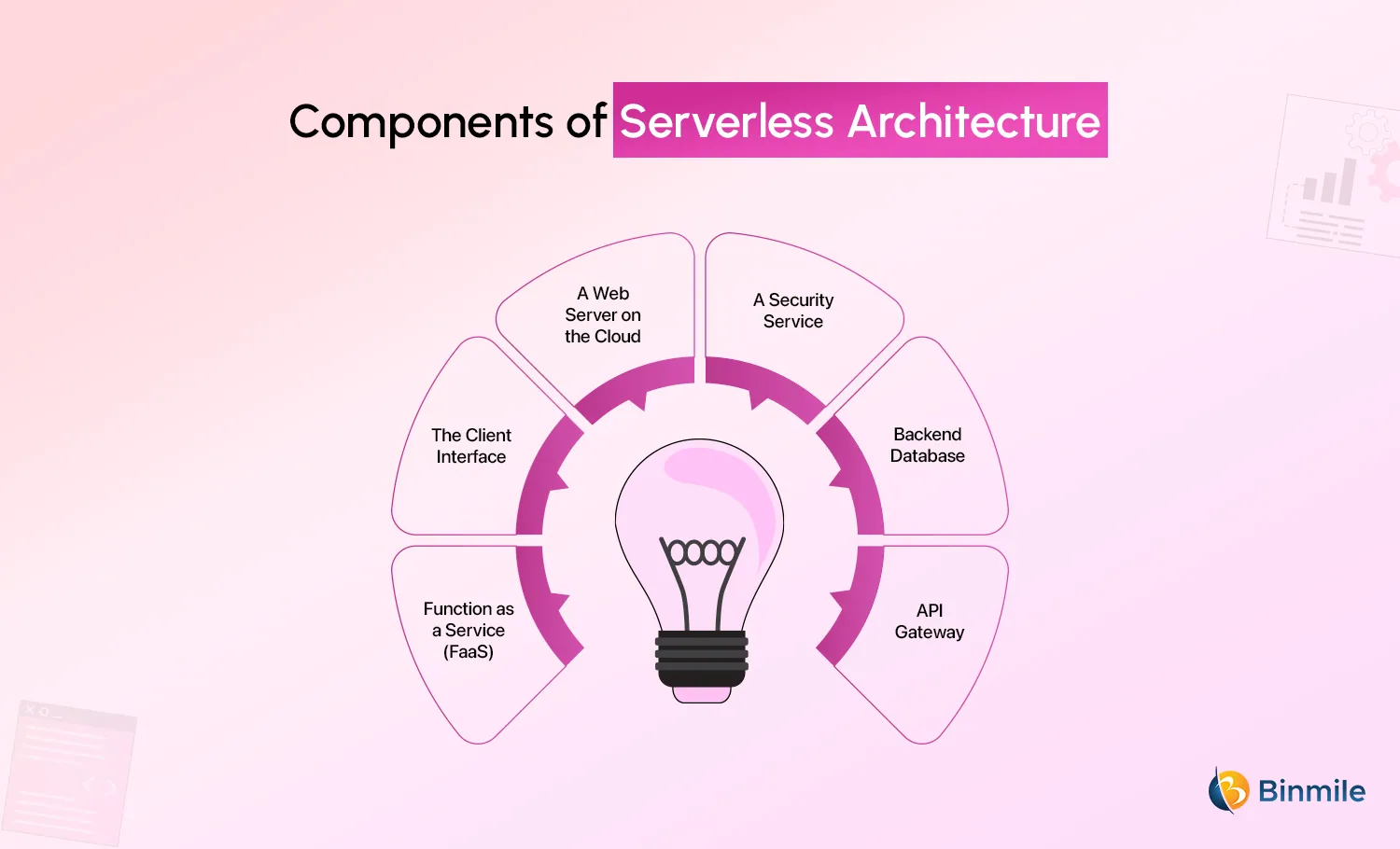
Out of these, the 3 main components are FaaS, backend database, and API gateway.
- FaaS: Using FaaS such as AWS Lambda, Azure Functions, or Google Cloud Functions, teams can write software logic or modular functions that directly trigger some action or event. Some of the common events include database changes, uploading of files, and HTTP requests.
- Backend Database: It provides a backend as a service (BaaS) capability that reduces the need for custom backend code. Some of the most used BaaS providers are AWS Amplify and Firebase.
- API Gateway: It is an important component of the serverless stack, as it handles all the routing requests, input validation, and other such incoming client requests. API gateway services, such as Amazon API Gateway or Azure API Management, help in easing the management and scaling of APIs. These can be used in the project process as they configure and scale efficiently.
Consult with our experts today to choose the perfect tech stack for your custom software!
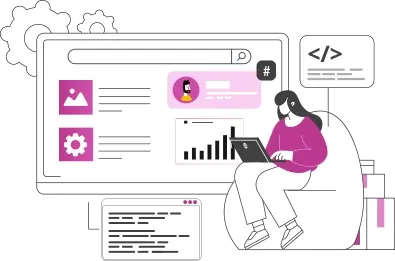
Why is It Necessary to Leverage the Best Software Tech Stack in 2025?
The response to this riddle is to defeat the competition. There is a never-ending list of tech stacks used by popular applications across the world, such as:
- Uber
- YouTube
- ICICI bank
The stronger the tech stack you have at your disposal, the easier it is to create and maintain your app in the long run, resulting in marvelous ROI from software. Please be informed that there is nothing like a bad tech stack. Instead, all tech stacks are good. But when it comes to the best one for a business, it will always depend on the specific needs of software development for startups. A multitude of factors that collectively contribute towards choosing the most suitable software stack for your business includes:
- The size of your project
- Your business type
- The nature of your application
- The kind of audience you want to target
How to Choose the Ideal Software Tech Stack for Development: 7 Tips to Know
As discussed above, picking the right development stack for the software development process is no easy feat. Thus, businesses need to make the most appropriate choice for their software project and clearly understand these valuable tips and incorporate them for an efficient development process:
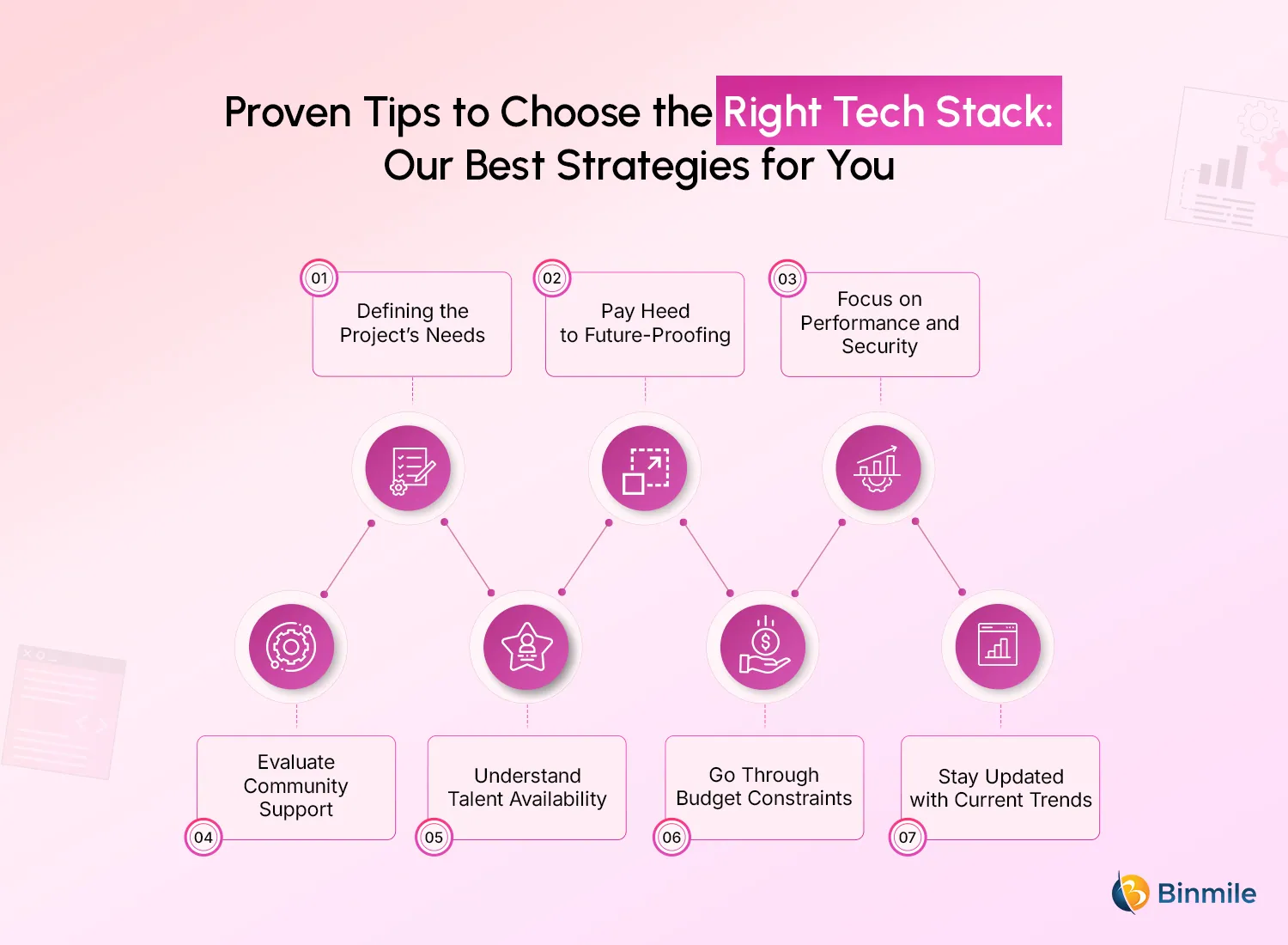
1. Defining the Project’s Needs
Get a deeper understanding of the requirements of the project, for example:
- Type of application
- Target platforms
- Expected scalability
Gaining answers to these questions helps businesses in choosing the right software technology stack that perfectly aligns with their specific vision board. Also, understanding the actual pain points of users and what leads to a long-term agile product, businesses can conduct feedback sessions after launching the custom software MVP (Minimum Viable Product).
2. Pay Heed to Future-Proofing
Work only with technologies that can match the pace of future growth and scale with the needs of the application. Building an app that adapts to the business needs without any disruptions is a crucial thing to acknowledge. Also, the app should be compatible and incorporate features in the future, such as integrating with third-party APIs or tools, handling more users, and implementing new features.
3. Focus on Performance and Security
Businesses should prioritize the performance and security of the app, as these are the critical necessities to protect users’ data from any cyber threats. Always invest in software stacks that offer greater performance and powerful security features, such as robust architectures, secured APIs, data encryption, and streamlined development processes. This leads to a smooth user experience and safeguards sensitive data.
4. Evaluate Community Support
Search for technologies that maintain active communities and offer extensive documentation, ensuring effortless troubleshooting and updates. Having a development stack that has a powerful community of experienced developers enables businesses to reach out to them if necessary for any development-related advice. A rich community also offers useful plugins and reusable libraries that teams can use in the development, leading to an accelerated development process.
5. Understand Talent Availability
Check the availability of software developers who have expertise in the preferred software stack, as that will ensure the creation and maintenance of the app effectively. Also, collaborating with an outsourced software development company can help reduce software development costs, gain agility, and achieve operational excellence.
6. Go Through Budget Constraints
Find out the long-term costs of the software stack, including but not limited to:
- Licensing fees
- Hosting expenses
- Maintenance requirements
According to a leading authority in Enterprise SAAS Management, license waste is one of the main challenges reported by IT and software asset management professionals. The harsh reality is that some organizations are wasting more licenses than they know. According to Zylo’s stats report, businesses use just 49% of their SaaS licenses, while 51% are paid for but never used, resulting in a waste of $2M per year for small establishments and $127M per year for bigger ones. Needless to say, businesses should optimize their overall costs and carefully select the tech stack that minimizes software development costs.
7. Stay Updated with Current Trends
Keep watching emerging technologies and software development trends that can improve the app’s capabilities, ultimately making the stack future-ready. Only when organizations implement these tips in real life will they help them make informed decisions. Selecting the right software stack that fits the project’s objectives and requirements enables teams to build any application with much more productivity and flexibility.
Maximize your business potential and growth using the latest technology stack, which keeps your organization familiar with current market trends.
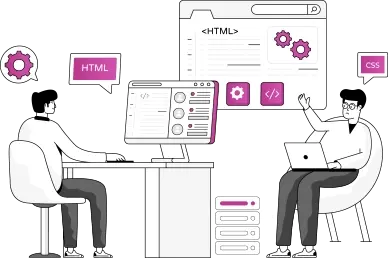
Final Thoughts On Building Custom Software Solutions
Choosing the right software stack is one of the most important things to do to ensure the success of the software development project. Businesses must keep several factors in mind when making such a decision, such as project size, time to market, team expertise, security requirements, and cost. Hence, it is essential to choose the tech stack that perfectly fits the business’s specific requirements and goals. However, you need to bear in mind that selecting the right stack will help in building a quality-oriented application that meets the needs of the target users.
With the right development stacks and software development team at hand, teams can easily create unique and effective software that can solve real-life problems. This blog explored the top 5 technology stacks for software development and how to leverage them to ensure maximum efficiency and operational success. To get more assistance, partnering with a preeminent software development company can help in leveraging custom software solutions for your organization.
Frequently Asked Questions
Tech stacks evolve regularly due to advancements in technology, the introduction of new frameworks or languages, and changes in industry best practices. Staying updated on trends and periodically reassessing tech stacks is common in the dynamic field of software development.
Key considerations include:
- Content Management System (CMS)
- Frontend technologies for a responsive design
- Backend technologies for content delivery and management
- Database for storing and retrieving articles
- Scalability and performance requirements
Choosing the best tech stack involves considering factors like:
- Project requirements
- Developer expertise
- Scalability needs
- Performance expectations
- Community support
- Integration capabilities
- Project requirements
- Developer expertise
- Scalability needs
- Performance expectations
- Community support
- Integration capabilities
A technology stack for web development is a combination of programming languages, frameworks, databases, and tools used to create and operate web applications. It includes both front-end and back-end components, which work together to deliver a seamless user experience.
Choosing the wrong technology stack can lead to several issues, including scalability problems, higher maintenance costs, and delayed development. It can also result in poor performance, limited flexibility, and increased security vulnerabilities. Additionally, if the stack is outdated or niche, finding skilled developers might become difficult, further complicating your project. To avoid these challenges, it’s essential to carefully select a stack that aligns with your project’s requirements and long-term goals.
